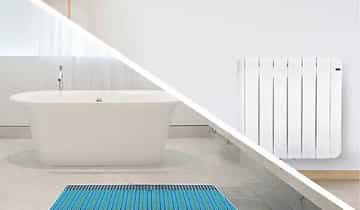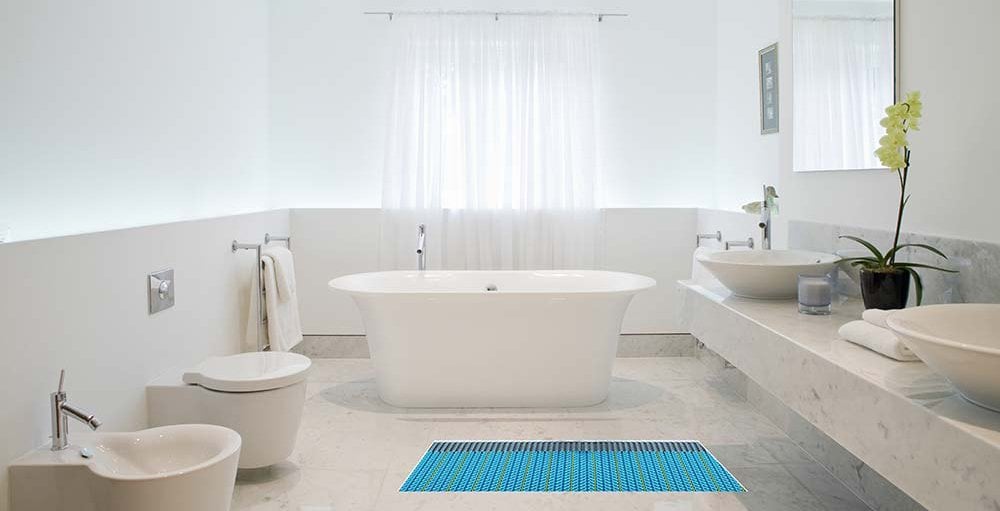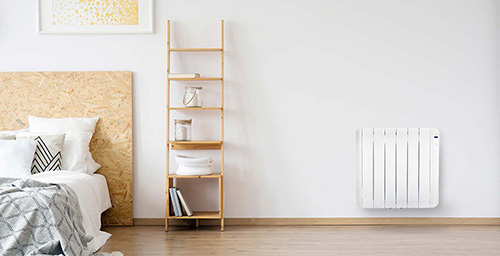7 min read
Underfloor Heating vs Radiators – What’s better?
When it comes to heating your home, there are a wide variety of options to choose from.Radiatorsare one of the most common ways to do it and the...

Without a doubt 2020 was a year of many ups and downs and now with the cooler weather upon us, it is important that we focus on the heating in our homes. Whether you are building, renovating or just plain old updating, we can help you with your decision on what heating would best suit your project.
So… when you think about heating what are you contemplating? Do you know that there are a wide range of choices available to you? In the blog below we are going to focus on underfloor heating and radiators.
Underfloor heating (UFH) tends to be the heating option of choice for many self-builders and renovators. It is as much about the comfort and efficiency as it is about the extra wall space it gives. Radiators on the other hand, are cheaper than underfloor heating to install if you are simply replacing like for like and choice is as much about aesthetics as it is about the amount of heat needed.

Underfloor heating offers an effective and efficient heating solution that is out of sight and makes no demands on wall space. It works by turning the entire floor area into a heating source either via warm water pipes (wet underfloor heating) or electric mats (or cables) concealed within the floor build-up.
The resulting gentle heat rises steadily upwards, and there are no cold spots or draughts, making for a very comfortable environment.
Advantages
Things to be aware of
Which underfloor heating system is right for you?
Yes, believe it or not there are lots of different types of underfloor heating and the system you choose will depend on the project you have. Wet underfloor heating is more frequently used in new build projects where the ‘pipework’ is installed in a much thicker layer of screed. Electric underfloor heating is ideal for both renovations and new builds as it has minimal impact on the height of the floor.
When it comes to electric underfloor heating, which type you install relies heavily on the type of floor covering you are going to lay over it. So, what are the options? Well, there’s Mesh, Membrane, Foil and in screed cable. If you are looking to install electric underfloor heating under a tile or stone finish, then either Mesh or Membrane would be ideal. If you choose a wood, carpet or vinyl floor finish, then Foil is the perfect choice. We discuss all these options at more length in our blog: Your guide to electric underfloor heating mats.

Radiators are designed to heat the air in the room using convection to transfer heat from the radiator to the surrounding air. They do this by drawing cool air in at the bottom, warming the air as it passes over the radiator fins, and discharging the heated air at the top. By far the biggest advantage of a radiator is that they are quick to warm up and easy to control.
Advantages
Things to be aware of
What radiator will you choose?
Just like underfloor heating, there are a range of options when it comes to choosing the right radiator for your home. However, if the benefits of electric radiators are appealing, then we have some great options for you. Each type of electric radiator has been carefully selected to ensure optimum efficiency is maintained, controlling comfort is easy and installation is simple. What‘s more, no matter what type you choose, our electric radiators are all Lot 20 compliant.
You can go for the stylish and sleek glass flat panel heater which comes with sleek aluminium feet so you can either use it as a free-standing heater or install it permanently on any wall using the built in brackets and fixing screws. Alternatively, you can go for a convector panel heater with its intuitive control panel with LCD display making it is easy to navigate through the heating modes to customise your heating experience. Finally we have the oil filled electric radiator with built-in energy monitor. It comes with everything you need in one box, including a handy wall fixing template! Its accurate, fast acting control reduces temperature overrun and maximises energy efficiency.
The main differences can be summarised in 5 key areas:
Well, yes actually they can. For example you can run your traditional central heating system and wet underfloor heating systems on one boiler using a two-port valve but it’s important you check with your boiler manufacturer. Combining underfloor heating and traditional central heating also allows you to create zones in your home, where one part gets heated via the radiators and others warm up with underfloor heating.
Of course, things like insulation can affect the heating of your home as well. So, when you are thinking of installing a new system, make sure you know the alternatives that are available to you and which one will best suit your project.
To find out more about our electric heating options, receive a customised quote or find your local reseller contact us today.

7 min read
When it comes to heating your home, there are a wide variety of options to choose from.Radiatorsare one of the most common ways to do it and the...

9 min read
It’s great that you are thinking about installing underfloor heating for your next project. You’ll receive all the benefits that come with underfloor...

5 min read
With the heating season just around the corner, and one of the busiest times of the year for any heating manufacturer, we thought it would be a good...